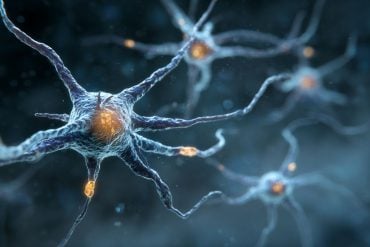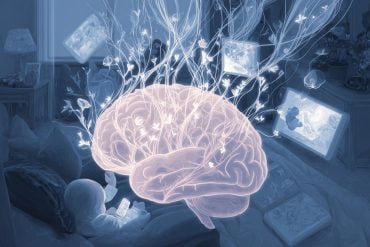Summary: A team of researchers has developed a simple three-minute brainwave test called Fastball EEG that can detect early signs of memory impairment linked to Alzheimer’s disease. Unlike traditional memory tests, it is passive and requires no active participation, making it more objective and accessible.
The study showed Fastball could be successfully used outside clinical settings, including in people’s homes, opening the door for wider use in GP surgeries and memory clinics. This breakthrough offers a practical and affordable way to diagnose Alzheimer’s earlier, just as new treatments are becoming available.
Key Facts:
- Early Detection: Identifies memory issues years before standard clinical diagnosis.
- Accessible Tool: Works reliably at home and in non-clinical settings.
- Treatment Relevance: Enables earlier use of breakthrough Alzheimer’s drugs.
Source: University of Bath
A simple brainwave test developed at the University of Bath has been shown to detect signs of memory impairment linked to Alzheimer’s disease years before clinical diagnosis is typically possible.
Published in the journal Brain Communications the study by academics from the University of Bath and the University of Bristol, reports that Fastball EEG, a three-minute passive test that records electrical activity in the brain while participants view a stream of images, can reliably identify memory problems in people with Mild Cognitive Impairment (MCI) – a condition that can lead to Alzheimer’s.
This follows the group’s previous study in 2021 that demonstrated Fastball was sensitive to memory impairment in Alzheimer’s disease.
Crucially, the research team has demonstrated for the first time that the test can be administered in people’s homes, outside of a clinical environment. Researchers say this opens the door to wider screening and monitoring using accessible, low-cost technology.
With the development of the breakthrough Alzheimer’s drugs, donanemab and lecanemab, an early diagnosis is more important than ever before. The drugs are clinically proven to be the most effective in the early stages of Alzheimer’s.
Despite this, in England, it is estimated that as many as 1 in 3 people do not currently have a dementia diagnosis, delaying treatments, support and research opportunities to tackle the condition.
The study was led by Dr George Stothart, a cognitive neuroscientist in the Department of Psychology at the University of Bath. He said:
“We’re missing the first 10 to 20 years of Alzheimer’s with current diagnostic tools. Fastball offers a way to change that – detecting memory decline far earlier and more objectively, using a quick and passive test.”
How the test works
Fastball is a passive EEG test that monitors the brain’s automatic responses to images – without requiring participants to follow instructions or recall information. This makes it more objective and accessible than traditional memory tests.
Key findings:
- Detected early memory issues in people with MCI likely to develop Alzheimer’s.
- Delivered reliable results in real-world home settings.
- Showed reduced memory responses even in patients who later progressed to dementia.
Researchers say Fastball could be scaled for use in GP surgeries, memory clinics, or at home – helping deliver earlier, more accurate diagnoses.
Dr Stothart added: “There’s an urgent need for accurate, practical tools to diagnose Alzheimer’s at scale. Fastball is cheap, portable, and works in real-world settings.”
The study was funded by the Academy of Medical Sciences and supported by dementia research charity BRACE.
Chris Wiliams, CEO of BRACE Dementia Research, said: “Fastball is an incredible tool that could offer anyone who, for whatever reason, cannot access a dementia diagnosis in a clinical setting.
BRACE has been supporting the development of Fastball for several years, and we are excited to see what Dr Stothart’s team will achieve over the next few years with ongoing support from the charity.”
About this Alzheimer’s disease research news
Author: Lynn Li
Source: University of Bath
Contact: Lynn Li – University of Bath
Image: The image is credited to Neuroscience News
Original Research: Open access.
“A passive and objective measure of recognition memory in mild cognitive impairment using Fastball memory assessment” by George Stothart et al. Brain Communications
Abstract
A passive and objective measure of recognition memory in mild cognitive impairment using Fastball memory assessment
As viable pharmacotherapies and blood biomarkers emerge for dementia treatment and screening, there remains a great need for accurate, sensitive biomarkers of cognitive function.
We have previously demonstrated that Fastball, a new Electroencephalography (EEG) method for the passive and objective measurement of recognition memory that requires no behavioural memory response or task comprehension, is sensitive to cognitive dysfunction in Alzheimer’s disease.
Here we present new evidence that Fastball is sensitive to amnestic dysfunction in an earlier stage of the dementia lifecourse, Mild Cognitive Impairment (MCI). 53 MCI patients and 54 healthy older adult (HOA) controls completed a 3-min Fastball task in which they passively viewed rapidly presented images while EEG captured their automatic ability to differentiate between images based on previous exposure.
They also completed neuropsychological assessments of memory (Delayed Match to Sample-48), sustained attention (Psychomotor Vigilance Task), and general cognitive function (Addenbrookes Cognitive Exam-iii). Participants were re-tested after 1 year to establish the test-retest reliability of Fastball in HOAs, and the sensitivity of Fastball to cognitive decline in MCI patients, over a 1 year period.
Amnestic MCI patients showed significantly reduced Fastball responses compared with non-amnestic MCI patients (P = 0.001, Cohen’s d = 0.98) and HOA controls (P = 0.005, Cohen’s d = 0.64). Regression analyses showed that Fastball EEG responses were selectively predictive of neuropsychological measures of recognition memory and not attention.
Between baseline and year one follow-up Fastball showed moderate to good test-retest reliability in HOA controls, and the six MCI-dementia converters showed a trend for lower Fastball responses at baseline which will be confirmed with further longitudinal assessment.
Fastball is further validated as a viable method for testing recognition memory in cognitively impaired populations.
We have demonstrated that it is selectively predictive of memory dysfunction and not attention or other cognitive functions. It is passive, non-invasive, quick to administer and uses cheap, scalable EEG technology.
Fastball is a viable functional biomarker that can help to advance cognitive assessment in MCI.







